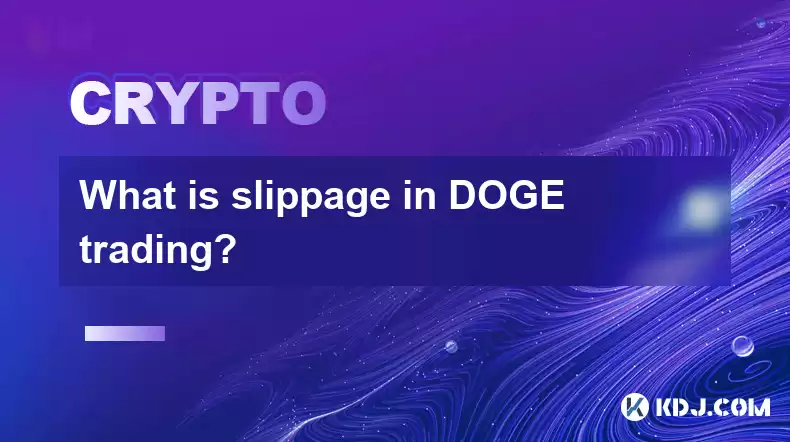-
 Bitcoin
Bitcoin $118900
0.42% -
 Ethereum
Ethereum $3710
-2.88% -
 XRP
XRP $3.513
-2.96% -
 Tether USDt
Tether USDt $1.000
-0.01% -
 Solana
Solana $203.0
3.65% -
 BNB
BNB $765.5
-1.29% -
 USDC
USDC $0.9998
0.00% -
 Dogecoin
Dogecoin $0.2671
-4.18% -
 Cardano
Cardano $0.8817
-3.63% -
 TRON
TRON $0.3139
-0.64% -
 Hyperliquid
Hyperliquid $44.34
-5.45% -
 Stellar
Stellar $0.4637
-4.08% -
 Sui
Sui $3.908
-2.59% -
 Chainlink
Chainlink $19.34
-2.62% -
 Hedera
Hedera $0.2712
-3.77% -
 Avalanche
Avalanche $24.97
-4.13% -
 Bitcoin Cash
Bitcoin Cash $519.8
-1.48% -
 Shiba Inu
Shiba Inu $0.00001518
-3.74% -
 Litecoin
Litecoin $115.6
-2.21% -
 Toncoin
Toncoin $3.460
3.68% -
 UNUS SED LEO
UNUS SED LEO $8.977
-0.07% -
 Polkadot
Polkadot $4.460
-2.96% -
 Uniswap
Uniswap $10.53
-5.43% -
 Ethena USDe
Ethena USDe $1.001
0.01% -
 Monero
Monero $323.6
-0.36% -
 Pepe
Pepe $0.00001379
-2.60% -
 Bitget Token
Bitget Token $4.772
-3.90% -
 Dai
Dai $0.9999
0.00% -
 Aave
Aave $307.5
-6.66% -
 Bittensor
Bittensor $441.8
0.84%
What is slippage in DOGE trading?
Slippage in DOGE trading is the difference between expected and actual trade prices, often caused by market volatility and low liquidity; using limit orders can help minimize it.
Apr 20, 2025 at 08:42 am

What is Slippage in DOGE Trading?
Slippage is a common term in the world of cryptocurrency trading, particularly relevant when dealing with volatile assets like Dogecoin (DOGE). Understanding slippage is crucial for traders who aim to execute their trades effectively and manage their risk. This article will delve into the concept of slippage in DOGE trading, exploring its causes, effects, and strategies to minimize it.
h3>Definition of Slippage
Slippage refers to the difference between the expected price of a trade and the price at which the trade is actually executed. In the context of DOGE trading, slippage can occur due to the rapid price movements that are characteristic of the cryptocurrency market. When you place an order to buy or sell DOGE, the market price might change before your order is filled, resulting in a different execution price than anticipated.
h3>Causes of Slippage in DOGE Trading
Several factors contribute to slippage when trading DOGE. One primary cause is market volatility. DOGE, like other cryptocurrencies, can experience significant price swings within short periods. These fluctuations can cause the price to move away from the trader's desired entry or exit point.
Another factor is liquidity. If the trading pair you are using (e.g., DOGE/USD) has low liquidity, it might be challenging to execute large orders without impacting the market price. Low liquidity can lead to higher slippage, especially during times of high market activity.
Order size also plays a role. Larger orders are more likely to experience slippage because they require more liquidity to fill. If the market cannot provide the necessary liquidity at the desired price, the order may be executed at a less favorable rate.
h3>Effects of Slippage on DOGE Trading
Slippage can have both positive and negative effects on your DOGE trading. Negative slippage occurs when the execution price is worse than the expected price. For instance, if you place a buy order for DOGE at $0.30, but the order is filled at $0.31 due to rapid price movement, you experience negative slippage.
On the other hand, positive slippage happens when the execution price is better than expected. If you place a sell order for DOGE at $0.30, but it is filled at $0.29, you benefit from positive slippage. However, positive slippage is less common and often less significant than negative slippage.
h3>Strategies to Minimize Slippage in DOGE Trading
To minimize the impact of slippage on your DOGE trading, consider the following strategies:
Use limit orders: A limit order allows you to specify the exact price at which you want to buy or sell DOGE. While this may prevent your order from being filled immediately, it can help you avoid negative slippage. For example, if you want to buy DOGE at $0.30, you can set a limit order at that price and wait for the market to reach it.
Trade during high liquidity periods: Liquidity tends to be higher during certain times of the day, often when major markets are open. Trading DOGE during these periods can help reduce slippage because there are more buyers and sellers in the market.
Break large orders into smaller ones: If you are planning to buy or sell a large amount of DOGE, consider splitting your order into smaller chunks. This can help minimize the impact on the market price and reduce slippage. For instance, instead of placing a single order for 10,000 DOGE, you could place ten orders for 1,000 DOGE each.
Monitor market conditions: Keeping an eye on market trends and news can help you anticipate potential price movements. If you know that a significant event is likely to affect DOGE's price, you can adjust your trading strategy accordingly to minimize slippage.
h3>Real-World Example of Slippage in DOGE Trading
To illustrate how slippage works in DOGE trading, consider the following scenario:
Suppose you want to buy 5,000 DOGE at the current market price of $0.30. You place a market order, expecting to spend $1,500 (5,000 DOGE $0.30). However, due to high volatility and low liquidity, the price of DOGE jumps to $0.32 before your order is fully executed. As a result, you end up spending $1,600 (5,000 DOGE $0.32) instead of the expected $1,500. This $100 difference represents the slippage you experienced.
h3>Conclusion and FAQs
Understanding slippage is essential for anyone trading DOGE or other cryptocurrencies. By recognizing the causes and effects of slippage and implementing strategies to minimize it, traders can improve their chances of executing trades at favorable prices.
Frequently Asked Questions:
Q: Can slippage be completely eliminated in DOGE trading?
A: No, slippage cannot be completely eliminated due to the inherent volatility and liquidity issues in the cryptocurrency market. However, traders can use various strategies to minimize its impact.
Q: Does slippage only occur in volatile markets?
A: While slippage is more pronounced in volatile markets like DOGE, it can occur in any market where there is a difference between the expected and executed price of a trade.
Q: How does the choice of exchange affect slippage in DOGE trading?
A: The choice of exchange can significantly impact slippage. Exchanges with higher liquidity and better order execution mechanisms tend to have lower slippage. It's important to research and choose an exchange that suits your trading needs.
Q: Are there any tools or indicators that can help predict slippage in DOGE trading?
A: While there are no specific tools designed to predict slippage, traders can use market depth charts and order book data to gauge liquidity and potential price movements, which can help in managing slippage.
Disclaimer:info@kdj.com
The information provided is not trading advice. kdj.com does not assume any responsibility for any investments made based on the information provided in this article. Cryptocurrencies are highly volatile and it is highly recommended that you invest with caution after thorough research!
If you believe that the content used on this website infringes your copyright, please contact us immediately (info@kdj.com) and we will delete it promptly.
- Bitcoin Betting, Small Investors, and the Specter of Dollar Collapse: A New Yorker's Take
- 2025-07-23 08:50:11
- Altcoins, Binance Futures, and Bitcoin Rotation: Catching the Crypto Wave
- 2025-07-23 09:10:11
- Dianne Smith, a Spanish Doubloon, and JM Mason: A Pike County Tale
- 2025-07-23 08:30:13
- Bitcoin, Investor, and Computer Blunders: A $95 Million Lesson
- 2025-07-23 09:30:12
- Bitcoin Bulls Eye $115,000, Poised for a $120,000+ Breakout?
- 2025-07-23 08:50:11
- MoonBull vs. Turbo: Who Wins the Crypto Meme Coin Race in 2025?
- 2025-07-23 08:30:13
Related knowledge

What is Chainlink (LINK)?
Jul 22,2025 at 02:14am
Understanding Chainlink (LINK): The Decentralized Oracle NetworkChainlink is a decentralized oracle network designed to bridge the gap between blockch...

What is Avalanche (AVAX)?
Jul 22,2025 at 08:35am
What is Avalanche (AVAX)?Avalanche (AVAX) is a decentralized, open-source blockchain platform designed to support high-performance decentralized appli...

What is Polkadot (DOT)?
Jul 19,2025 at 06:35pm
Understanding the Basics of Polkadot (DOT)Polkadot (DOT) is a multi-chain network protocol designed to enable different blockchains to transfer messag...

What is Monero (XMR)?
Jul 21,2025 at 10:07am
What is Monero (XMR)?Monero (XMR) is a decentralized cryptocurrency designed to provide enhanced privacy and anonymity for its users. Unlike Bitcoin a...

How to add indicators to Ethereum chart on TradingView?
Jul 19,2025 at 07:15am
What Is an Ethereum Chart on TradingView?The Ethereum chart on TradingView is a visual representation of the price movement of Ethereum (ETH) over a s...

How to use the Ichimoku Cloud for ETH?
Jul 18,2025 at 09:56pm
Understanding the Ichimoku Cloud and Its ComponentsThe Ichimoku Cloud, also known as Ichimoku Kinko Hyo, is a versatile technical analysis tool that p...

What is Chainlink (LINK)?
Jul 22,2025 at 02:14am
Understanding Chainlink (LINK): The Decentralized Oracle NetworkChainlink is a decentralized oracle network designed to bridge the gap between blockch...

What is Avalanche (AVAX)?
Jul 22,2025 at 08:35am
What is Avalanche (AVAX)?Avalanche (AVAX) is a decentralized, open-source blockchain platform designed to support high-performance decentralized appli...

What is Polkadot (DOT)?
Jul 19,2025 at 06:35pm
Understanding the Basics of Polkadot (DOT)Polkadot (DOT) is a multi-chain network protocol designed to enable different blockchains to transfer messag...

What is Monero (XMR)?
Jul 21,2025 at 10:07am
What is Monero (XMR)?Monero (XMR) is a decentralized cryptocurrency designed to provide enhanced privacy and anonymity for its users. Unlike Bitcoin a...

How to add indicators to Ethereum chart on TradingView?
Jul 19,2025 at 07:15am
What Is an Ethereum Chart on TradingView?The Ethereum chart on TradingView is a visual representation of the price movement of Ethereum (ETH) over a s...

How to use the Ichimoku Cloud for ETH?
Jul 18,2025 at 09:56pm
Understanding the Ichimoku Cloud and Its ComponentsThe Ichimoku Cloud, also known as Ichimoku Kinko Hyo, is a versatile technical analysis tool that p...
See all articles

























































































